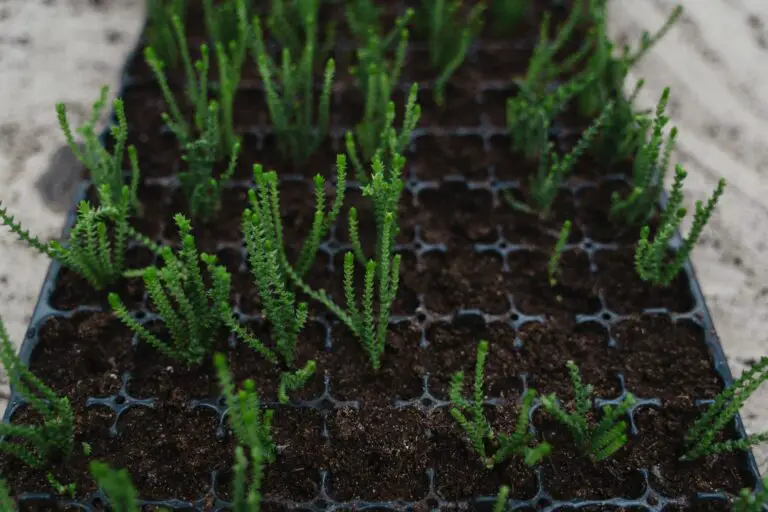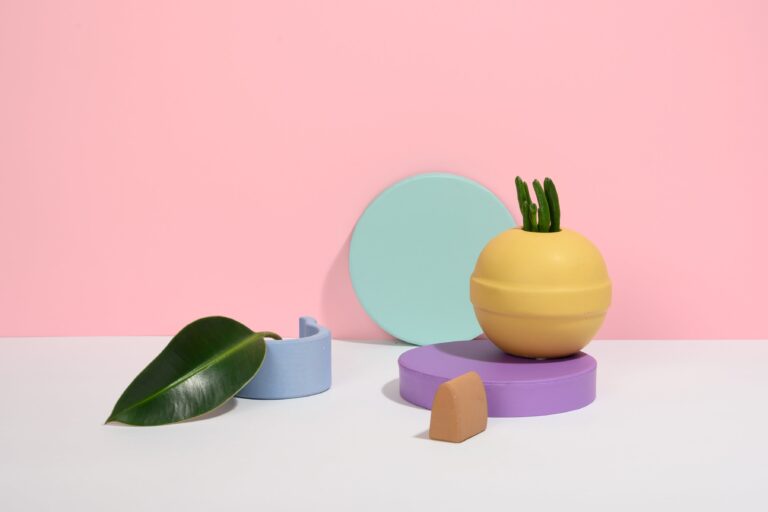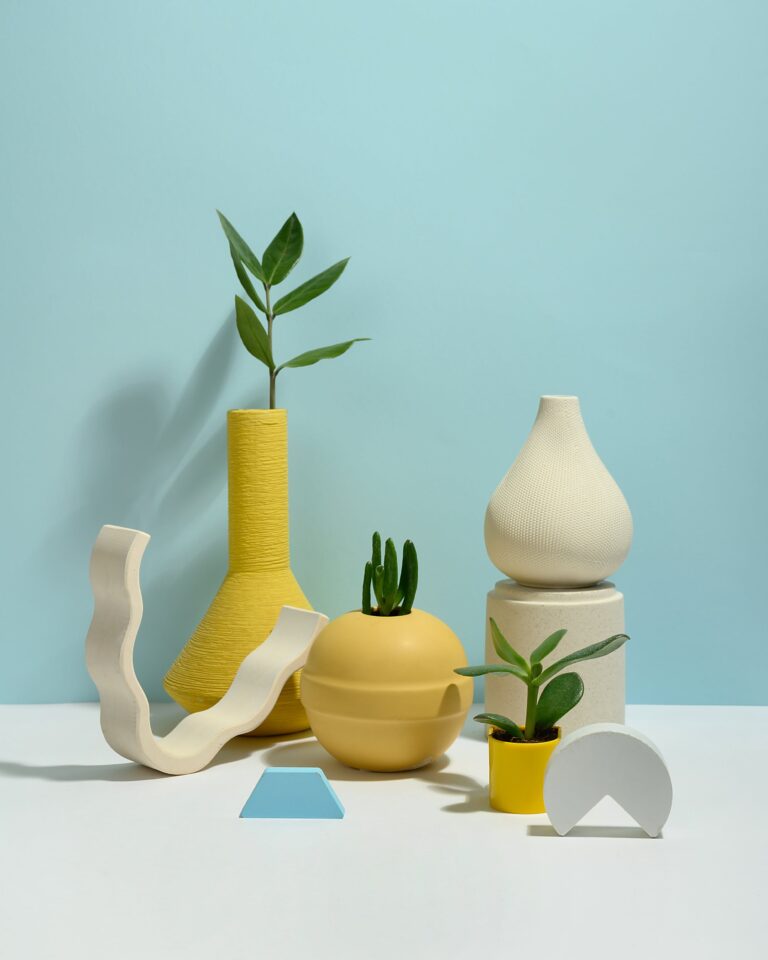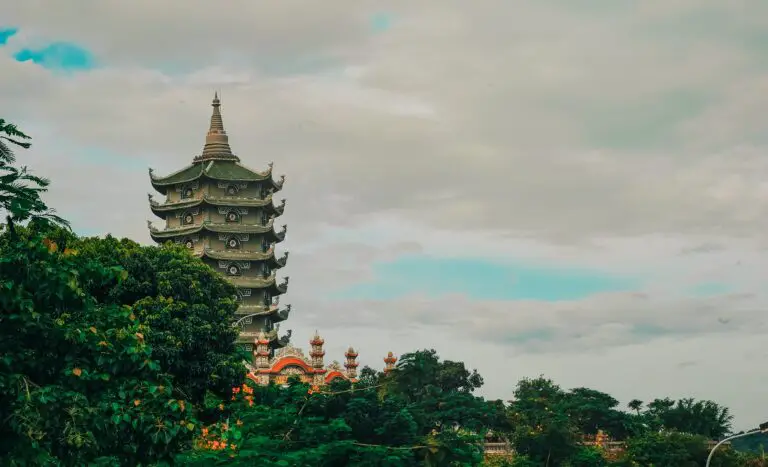Introduction to Crassula Pagoda

Imagine stumbling upon a living architectural marvel, as meticulously structured as the most intricate buildings of ancient civilizations. This is the Crassula Pagoda, a succulent that evokes the artistic symmetry and form of towering pagodas. Its discovery not only enchanted plant enthusiasts but also puzzled scientists, who marveled at its precise geometric growth patterns—a true testament to nature’s mathematical precision.
Originating from the sun-drenched lands of South Africa, the Crassula Pagoda took its time to claim its rightful place within the diverse succulent family. Each fleshy leaf is placed with such intent that it forms a staircase spiraling towards the heavens, mimicking the layered tiers of temple spires. It’s as if each plant is competing to be a miniaturized wonder of the world within your living room.
For those captivated by its beauty and considering bringing this slice of horticultural history into their own home, understanding its lineage within the larger Crassula family is pivotal for successful cultivation. Luckily, there is a comprehensive guide that unravels the mysteries of Crassula species, equipping aspiring gardeners with the knowledge to nurture these green gems.
Each Crassula Pagoda plant stands as a reminder of the earth’s enduring artistry, a living sculpture that brings the wonder of natural geometry into our homes. It embodies a quiet yet resilient spirit, thriving in conditions that would leave many other plants withering. By understanding and appreciating its remarkable structure and storied past, we can ensure that it continues to grow, inspire, and mesmerize for generations to come.
Botanical Profile
Ever found yourself mesmerized by the striking geometry of a plant? Welcome to the world of Crassula Pagoda, a realm where captivating shapes and resilience collide. Let’s embark on a journey to uncover the botanical essence of these succulent marvels.
Scientific Roots: Classifying Crassula Pagoda
Dive into the scientific lineage of Crassula Pagoda, part of the vast Crassulaceae family known for their water-storing prowess. Picture this: a terrain dotted with these fleshy, verdant architects, each one a masterpiece of perseverance reflecting its adaptation to harsh, arid environments. Indeed, witness evolution’s craft at its finest!
Name Game: Unraveling the Common Monikers
Affectionately referred to as “Shark’s Tooth” due to the jagged leaf edges resembling a predator’s bite, the Crassula Pagoda also assumes the alias “Red Pagoda”. Immerse yourself in the beauty of this species’ color transformation, a sunset-inspired hue shift that speaks volumes of nature’s artistic flair.
A Botanical Portrait: Crassula Pagoda Unveiled
Visualize a canopy of intricately stacked leaves, their pointy tips painting a dynamic silhouette against the skyline. The Crassula Pagoda, with its alternating leaf arrangement, unfolds like a tale of structural sophistication. Those in the know whisper tales of seasonal hues—verdant greens giving way to fiery reds and alluring purples, marking time’s passage in a visual celebration.
Amidst this botanical haven, why not explore more about Pagoda Plant care, and equip yourself with the knowledge to nurture these succulent treasures?
Curious about the broad world of succulents? Embark on a journey of discovery with our ultimate guide to indoor succulent plant care, where you can unearth the nuances of creating your very own oasis.
Watch and learn as this unveils practical tips and insights into the delicate art of Crassula Pagoda cultivation.
Cultivation Essentials
Welcome to the delightful world of the Crassula Pagoda, where the art of cultivation becomes an entrancing process, unveiling the lush beauty of these succulent marvels. Let’s dig into the essentials to keep your Pagoda as vibrant as a painter’s palette.

Let There Be Light
Ever wondered what’s the secret behind those who seem to have a magic touch for growing plump, vibrant succulents? Spoiler: It’s all about light! Crassula Pagoda thrives in a bright environment that’s drenched with sunlight. Just like how we crave our morning coffee, this radiant darling covets a good soak in the early sun rays. Establish a sunny nook – a sunny windowsill or a comfy spot on the balcony – to bring out the best in your Pagoda’s geometric foliage.
Climate: The Cozy Corner
Succulents, with their carefree attitude, are often misunderstood as unbreakable, but they too have a sweet spot when it comes to climate. Our Pagoda pals prefer it warm and dry, somewhat like an desert oasis. In real life, creating that microclimate could mean keeping them away from drafty windows in winter or ensuring a breezy arrangement during humid spells. A stable climate is your ticket to a content Crassula that’s more resilient to the elements.
Timing, Timing, Timing!
Is there a perfect moment for planting these architecturally stunning succulents? Absolutely. As any avid gardener will tell you, timing is everything – think of it like catching the perfect wave for surfing. Spring rolls out the green carpet for new plant beginnings. It’s a season of growth, renewal, and the ideal planting season for your Crassula Pagoda. At this time, the increased daylight and warmer temperatures provide the perfect catalyst for a growth spurt.
For more savvy succulent tips, take a peek at our comprehensive guide, Unveiling the Charms of This Succulent Marvel, which outlines easy-to-follow advice tailored to your Crassula’s needs. Embark on the journey to becoming the ultimate succulent whisperer!
Soil and Watering Recommendations
Preparing the perfect abode for Crassula pagoda isn’t just a matter of throwing some dirt in a pot and hoping for the best. Let’s dive into the nitty-gritty of soil mixtures and unravel the mysteries of the optimal watering schedule for these succulent treasures.
The Quest for the Quintessential Soil Mixture
Imagine you’re a gourmet chef, and your Crassula pagoda is the discerning diner. Just as the diner wants a meal cooked to perfection, your green guest demands a soil mix that caters to its needs. What’s the secret recipe? It’s a well-draining, airy mixture—think equal parts potting soil, coarse sand, and pumice or perlite. This medley ensures that your plant’s roots are living it up in a soil rave, with enough space to breathe and sufficient moisture to sip on without getting water-logged.
Watering Wonders: The Scheduler’s Guide
Just as you wouldn’t pour a whole kettle of tea at once, your Crassula pagoda doesn’t want a deluge. Overwatering is the nemesis of succulents; it’s like giving them an unwanted bath! Instead, we’re going to take cues from nature. During the growing season in spring and summer, a generous watering when the soil has dried out mimics the occasional rainfall they’d enjoy in their natural habitat. In the cooler, dormant months of fall and winter, think of it as tucking them in with a cozy blanket, giving them just enough to drink to keep them hydrated. Less is more during this time—a sprinkle of water every few weeks and they’re golden.
Let’s not just talk about it, though. Here’s a visual treat—a video with insights on how to multiply your Crassula pagoda and ensure it thrives with the right care:
Pruning and Maintenance Guide
Welcome to your go-to guide for keeping your Crassula Pagoda in tip-top shape! Pruning isn’t just about snipping away—it’s an art that embodies care and foresight, ensuring your succulent masterpiece thrives. Get ready to dive into a hands-on world where each cut shapes the future of your vibrant Crassula Pagoda.
First off, let’s talk timing—when is the best moment to wield your pruning shears? Ideally, it’s just after the blooming season, when the energy of your plant is focused back on growth. This is when your Crassula is in the prime of its life cycle to heal and sprout new, lush leaves. Think of it as the plant’s version of a post-vacation glow!

Now, envision yourself as a sculptor; each clip you make shapes the tableau of your garden. Start at the top and work your way down, removing any dead or yellowing leaves that are draining the energy from the vibrant greens. It’s not just about aesthetics—this step is crucial for preventing disease and pests from taking hold.
As for the tools of the trade, your best friends are a pair of sharp, clean pruning shears or scissors. Sterilize them before and after your pruning session to prevent any spread of infection. It’s like ensuring your garden is operating within a cleanroom environment—okay, almost like that.
When you’re ready to prune, it’s simple—snip off the top rosettes to maintain that iconic pagoda shape and limit the overall size, if you wish. And here’s a tip: those clipped rosettes? They’re not just garden waste. With a little bit of soil and patience, they can give birth to new Crassula Pagoda plants. It’s the circle of life, on your windowsill!
Routine maintenance includes a vigilant eye for the early signs of trouble—think of yourself as the Sherlock Holmes of succulents. Peek beneath the foliage, check for pests like aphids or mealybugs, and at the slightest hint of trouble, take action. A simple soap and water solution can work wonders.
Does your Crassula Pagoda look a bit dusty? It’s not just about clean leaves for the ‘gram—it’s essential for the plant’s health. Carefully wipe down the leaves with a damp cloth to ensure it can soak up every bit of sunlight. Think of it as helping your plant to photosynthesize at full capacity—like a solar panel without the bird droppings.
Remember, the key to a robust Crassula Pagoda is consistency—regular pruning and maintenance are the secret ingredients to a long and flourishing life. Your Crassula isn’t just a plant; it’s a living sculpture, an ever-evolving piece of art in your home garden. So go ahead, wield those shears with confidence and watch your Crassula Pagoda thrive!
Propagation Pointers for Crassula Pagoda Plants
Ever marveled at the symmetrical beauty of the Crassula Pagoda and wished you could multiply that geometric genius in your own garden? Well, you’re in luck! Read on to discover the ins and outs of breathing life into new succulent masterpieces.
The Art of Cloning: Propagation from cuttings is a popular performance among Crassula Pagoda enthusiasts. It’s like taking a piece of architecture and replicating its glory – only, with plants. Snip a portion of the stem, ideally during the spring growth spurt, and let it callous over for a few days. This tiny pause allows a protective barrier to form over the cut, which guards against any unwanted bacterial gatecrashers during rooting.

Leaf Lore: For a more delicate venture, try leaf propagation. Singles only – pick a lone, healthy leaf and, with a gentle twist, set it aside to dry for a spell. Once the end is calloused, nestle it atop a soil stage fit for a Crassula star. Mist it with the love it deserves, and soon, it’ll perform its magic, sprouting roots and a new plantlet.
Do’s and Don’ts: While it might seem straightforward, don’t be fooled; the path to propagation is lined with crucial dos and don’ts. Always use clean shears for the task – think surgeon-clean. And don’t rush the rooting process; treat it like a fine wine that needs time to mature. Too much water and your hopeful progeny will turn to mush. Instead, opt for a light misting, as if you’re teasing the roots out rather than flooding them into existence.
Real-life example alert: Consider Jenna, a fellow succulent sage, who once told me about her calamitous overwatering saga. She loved her Crassula Pagoda cuttings a tad too much, leading to an aquatic ending rather than a terrestrial triumph. Learn from Jenna – moderation is key.
So there you have it, aspiring propagators – a crash course in Crassula Pagoda reproduction. With a sprinkle of patience and a dash of care, you’ll have the architectural wonders of the plant world propagating in no time!
Troubleshooting Common Issues with Crassula Pagoda
Growing Crassula Pagoda is a rewarding experience, but sometimes issues pop up like uninvited guests at a garden party. Pests, diseases, and environmental stress can crash the serenity of your succulent sanctuary. But don’t fret! With a keen eye and some insider know-how, you’ll be equipped to handle these pesky problems and keep your Crassula Pagoda thriving.
Combatting Pests: The Unwanted Critters
Let’s talk about pests – not the neighbors’ kids, but the tiny critters that see your Crassula Pagoda as a free all-you-can-eat buffet. Mealybugs, aphids, and spider mites are common freeloaders that leave behind a mess of sticky residue and discolored leaves. Imagine finding your prized plant covered in a sticky web, courtesy of spider mites! Quick tip: a soft spray of water can dislodge these Spider-Man wannabes, and for the stubborn ones, dabbing them with a cotton swab dipped in alcohol will evict them for good.
Dueling with Diseases: Keeping Fungus at Bay
Now onto diseases. Imagine waking up one day to find your Crassula Pagoda with unsightly brown spots or wilting dramatically like a soap opera star. Often, it’s a sign of fungal issues, which can arise from overwatering or poor air circulation. It’s like turning your succulent’s home into a steamy tropical rainforest, minus the exotic birds. Cutting back on the water and improving airflow can clear up these fungal forays. Think of it as giving your plant a breath of fresh, dry air!
Environmental Stressors: When the Conditions Just Aren’t Right
Environmental stressors are like bad weather for your Crassula Pagoda’s getaway. Too much sun can lead to a sunburn – yes, plants get them too – leaving your succulent’s leaves as red as a lobster. On the flip side, insufficient light turns ‘Pagoda’ into a stretching yoga master, reaching for the sun. And let’s not even start on the perils of incorrect soil mix or rogue temperature fluctuations. Want to avoid these dramas? Provide a cozy habitat with the right balance of light, temperature, and soil that’s well-draining and as comfy as a bed in a five-star hotel.
By understanding and anticipating these common issues, your Crassula Pagoda care will be top-notch. It’s like being a plant detective, spotting the signs and stopping the culprits in their tracks. With these strategies in your gardening toolkit, your Crassula Pagoda will be free to flourish, and you’ll be the talk of the town – or at least the topic of conversation amongst the local gardening club.
Decorative Uses in Landscaping
Welcome to the lush world of Crassula Pagoda, where this charming succulent brings an artistic flair to gardens and living spaces alike. Let’s delve into the creative ways you can showcase this plant’s unique, geometric beauty in your landscaping endeavors.

Imagine a miniature zen garden on your patio: Crassula Pagoda stands proudly among smooth pebbles and swaying bamboo, invoking serenity with its stacked leaves that resemble an ancient temple. This pairing is not just aesthetically pleasing but also symbolizes balance and tranquility, blending the realms of flora and architecture seamlessly.
Spotlighting the Pagoda: A Focal Point in Garden Design
Our Crassula Pagoda thrives as the centerpiece of a rock garden or nestled among a group of larger boulders. Its intriguing form commands attention and serves as a natural focal point. Spotlighting or uplighting can further enhance its dramatic effect, casting shadows that highlight the pagoda-like structure of the leaves, particularly stunning during the twilight hours.
Elevating Indoor Spaces with Nature’s Geometry
Drawing inspiration from the structural integrity of Crassula Pagoda, consider incorporating it into indoor living walls or terrariums. The plant’s symmetrical form creates a visual rhythm, making it an exceptional candidate for adding depth and dimension to your indoor garden compositions. It pairs particularly well with other succulents exhibiting a variety of textures and shades of green, bringing a slice of exotic landscape indoors.
With a little creativity and an eye for design, Crassula Pagoda can transform an ordinary space into an extraordinary garden oasis. Whether it’s the centerpiece of a tranquil rockery or a living sculpture within your home, the versatility and striking appearance of this succulent are sure to make a lasting impression.
Benefits and Interesting Facts
Imagine a plant that not only adds a hint of geometric elegance to your living space but also quietly works its magic to cleanse the air you breathe. Enter Crassula pagoda, a succulent with superpowers. Behind its stacked, pagoda-like leaves lies an arsenal of benefits that might just surprise you.
Crassula species have long been celebrated not only for their unique architectural beauty but also for their incredible air-purifying qualities. They take on the role of silent guardians, filtering out harmful toxins and bestowing upon us a breath of fresher air. Think of these plants as Mother Nature’s mini air purifiers—no electricity required, just a bit of love and light.

But the charm of the Crassula pagoda doesn’t end there. Folklore whispers about their potential healing properties too. While scientific research is still digging into these claims, embracing the possibility that your home ornament might have a hidden talent for healing is quite alluring. Whether it’s true or not, there’s no denying the soothing effect of nurturing a growing thing, watching it thrive under your care.
One of the less-known but fascinating facts about Crassula pagoda is how resilient they are. These plants are model examples of survival, thriving in rocky crevices and withstanding periods of drought with poise. This hardiness symbolizes the strength and perseverance we all sometimes need a reminder of in our lives. Let it stand in your home as a small but mighty emblem of endurance.
The Crassula pagoda isn’t just a plant; it’s a statement piece that tells a story of purification, potential healing, and unwavering resilience. Next time you glance over at your Crassula pagoda, remember you’re not just looking at a pretty succulent—you’re beholding a living, breathing piece of art laced with benefits that extend beyond its aesthetic appeal.
Frequently Asked Questions
Ever wondered why your Crassula Pagoda might be looking less than stellar? Join the club! It’s not uncommon for plant enthusiasts to hit a bit of a leaf roadblock. But don’t fret, we’re about to get into the nitty-gritty of Crassula Pagoda care with some real talk from real-life experiences.
Why is my Crassula Pagoda not as vibrant as it used to be?
If your once-vibrant jade spires are turning a lackluster shade, it’s a cry for help. Take Jenny’s Crassula, for example. Jenny, an avid balcony gardener, noticed that her Crassula Pagoda was losing its vibrant red tips. After a little sleuthing, Julie discovered it was a simple case of too much love – yep, overwatering. Cutting back on the H2O and making sure the drainage was on point brought the red back to life!
How often should I repot my pagoda plant?
Think of repotting like renewing a lease for your plant’s roots. Every couple of years, your green buddy will appreciate a new home. Tom, who’s had a Crassula Pagoda for over five years, swears by repotting every other year. He says it’s like hitting the refresh button on his plant’s growth, and who doesn’t love a fresh start?

My Pagoda is getting leggy. What’s going on?
Leggy plants are the tell-tale sign of a sunlight seeker. Too little light, and your plants start their own version of stretching exercises, reaching for any ray they can get. Sarah’s city apartment doesn’t get much light, but once she added a grow light to her plant corner, her Crassula Pagoda got back to its compact, robust self in no time.
It’s got spots! Is my plant sick?
Plants get blemishes too, and it’s usually a sign they’re not happy about something. For Mark’s Crassula Pagoda, it was a sunburn – yes, plants get those. Remember, they love light but think more along the lines of a diffused, gentle morning sun rather than a midday desert vibe. A little shade goes a long way.
So there you have it, some real-life tales of triumph and tribulation in the world of Crassula Pagoda cultivation. Keep these stories in mind next time you’re puzzling over your green friend, and you’ll be a plant whisperer in no time!



